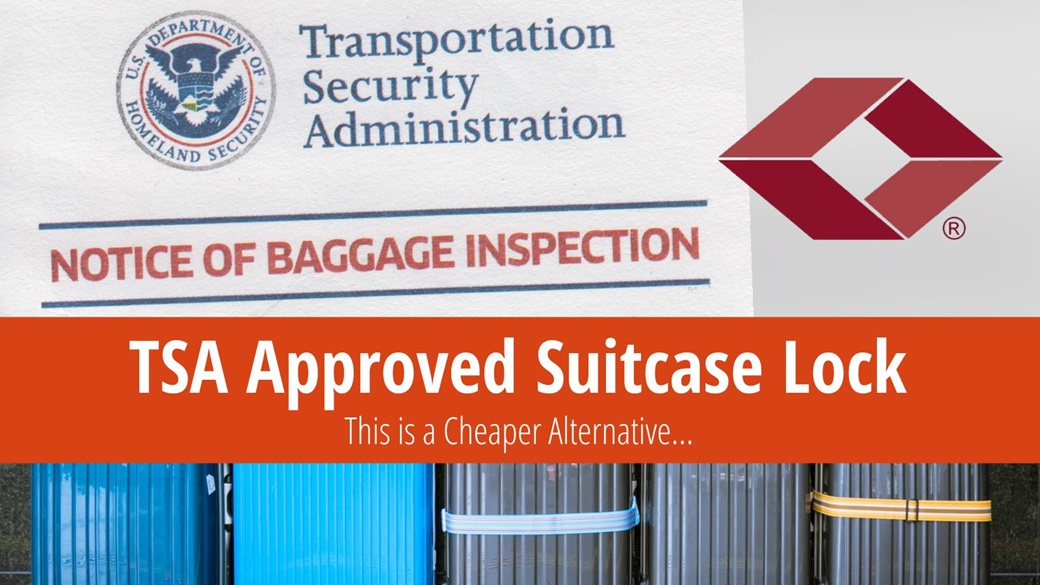The Transportation Security Administration (TSA) is required by law to screen luggage before it is loaded onto an aircraft. All luggage is passed through an X-ray scanner, and a smaller portion of it undergoes a more thorough inspection, during which the suitcases are opened and manually checked. No consideration is given to potential damage to locks or luggage. This is where a TSA-approved luggage lock comes in handy.

-
Table of Contents
TSA Luggage Lock Can Be Opened Without Damage
TSA-approved or accepted locks can be recognized by the red cube logo without a bottom. TSA staff can use a master key to open these locks without causing any damage. After inspecting the luggage, they will relock the lock.
If your luggage is locked with an unauthorized lock, TSA staff will cut the lock during inspection. Afterward, the suitcase will be transported unlocked.
You will know that your luggage has been inspected by TSA staff because of the “Notice of Baggage Inspection” card, which will be left inside.
-
Price of TSA Luggage Locks and Alternative Solutions
The cheapest TSA-accredited locks can be purchased for approximately $9.00, and are available online or in brick-and-mortar stores. Always look for the “TSA Accepted” or “Travel Sentry Approved” label and the red cube symbol without a bottom. Some locks feature an indicator that lets you know a master key has been used to open them.
However, TSA-certified locks will never provide you with complete security. On YouTube, there are numerous videos showing how TSA-certified locks can be opened in just a few seconds using lock-picking tools. Not to mention that if someone is determined to break into your luggage, they will always find a way to bypass the lock.
An alternative to a certified lock is simple: just use cable ties. A suitcase secured with them will be as protected as with any lock. And if you add one extra tie, TSA staff will be able to relock your luggage after the inspection.

 10 Best Photo Places in the USA
10 Best Photo Places in the USA




Contribute with Your Question or Personal Experience